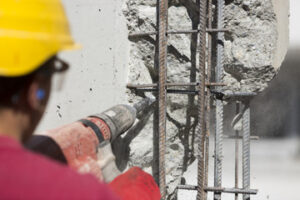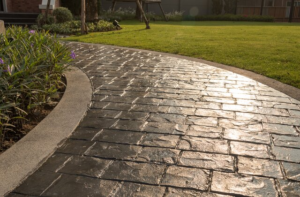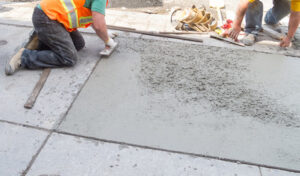The concrete construction expertise and precision that professional contractors bring to residential and commercial projects saves time, eliminates costly mistakes, and ensures long-lasting results. The right pick will also be able to effectively manage unexpected issues that may arise during the project.

To find the best contractor, start by asking friends and family for referrals. Searching online reviews and calling concrete supply companies for recommendations will also help. Contact Concrete Contractor Columbus for professional help.
Working with concrete can be a physically demanding job. It is important that the Contractor has a strong desire to learn and be successful in this industry. This passion for the craft is evident through their work ethic and dedication to quality.
It is this love for the craft that drives Yagi’s team and their clients to excel in every project. Wouldn’t it be great if contract manufacturers showed this same love for their employees?
Knowledge of the Industry
Concrete is used in numerous applications, and professional contractors must have a thorough understanding of its uses and capabilities. This enables them to plan projects correctly and efficiently. Having extensive knowledge of the industry also helps them identify the right materials and equipment to use.
Whether they’re laying the foundation for a new building or repairing cracks in an existing surface, they know how to make concrete look its best and meet structural requirements. Concrete professionals also keep up with industry standards and new technological developments that could affect their work.
In addition to demonstrating their knowledge of concrete, a good contractor should be able to provide a portfolio of past work that showcases their skill and craftsmanship. This will allow you to compare pricing and get an idea of the type of results you can expect from their services. Similarly, it’s important to ask about the length of time they have been in business and their certifications or affiliations with industry associations. These credentials indicate a dedication to quality and adherence to professional standards.
Another important question to ask is if they have insurance. Having liability insurance protects you in case any accidents or damage occur during your project. Finally, it’s helpful to request references from previous clients to see if they can provide insight into the contractor’s work ethic and performance.
A reputable concrete contractor will be happy to provide you with a list of references upon request. You can also check online reviews to see what other people have said about their experience working with the contractor. If you find that a particular concrete contractor has an outstanding reputation, this is a good sign that they are reliable and produce high-quality results. You should also consider asking about the contractor’s warranties and guarantees to ensure that you are covered in the event of any issues that may arise after the project is completed. This will give you peace of mind knowing that the contractor is committed to their work and will do what it takes to address any problems that arise.
Reliability
One of the most important factors when choosing a concrete contractor is their reliability. A reliable contractor is committed to working with the client to achieve their vision while maintaining high quality and safety standards. They adhere to industry best practices and utilize proper construction methods to guarantee the durability of their work. They also provide upfront and transparent quotes, timelines, payment terms, warranties, and other critical details. This ensures that both parties are aware of their responsibilities and avoids misunderstandings throughout the project.
When evaluating a contractor’s reliability, it’s important to look at their previous work and customer reviews. Ask for access to a portfolio of their completed projects and request references from past clients. This gives you a firsthand account of their craftsmanship and level of attention to detail.
You should also check the contractor’s licensing and insurance coverage before starting any work. Licensing ensures that they meet the requirements for your specific project, while comprehensive insurance coverage safeguards against unforeseen events and accidents on the job site. A COI is an essential document that details the contractor’s liability insurance, worker’s compensation insurance, and auto insurance.
A concrete contractor’s experience level is a key indicator of their reliability. Those with extensive experience have the knowledge and expertise to handle any challenges that may arise during your project, ensuring a smooth construction process and exceptional results. When evaluating a contractor’s experience, it is crucial to consider their past project success rate and how well they handled any obstacles that arose.
To determine a contractor’s reliability, it is essential to assess their project management skills and communication abilities. A skilled concrete contractor will be able to outline a detailed project timeline and cost breakdown, as well as establish a clear and concise communication plan. This ensures that both parties are on the same page throughout the entire construction process and prevents miscommunications that can result in delays, budget overruns, and subpar workmanship.
Communication Skills
Concrete contractors must be able to effectively communicate with clients, engineers, project managers, and architects. This includes being able to clarify project requirements and provide accurate estimates. It also means communicating any potential hurdles in a timely manner and working with others to resolve issues as they arise. Contractors with strong communication skills can help ensure that expectations are met, and that the final product is high quality.
When evaluating the credentials of a concrete contractor, ask for references from previous clients. These references can provide insights into the contractor’s level of professionalism and ability to meet project deadlines. Likewise, checking the contractor’s license and insurance can help verify that they are qualified to perform construction work in your area and have met industry standards.
A reliable contractor will have a strong portfolio of past projects that demonstrate their skill and attention to detail. Take the time to inspect these projects in person or view photos of finished work. Look for precision in finishing, durability, and adherence to design specifications. A concrete contractor who takes pride in their work is more likely to deliver a result that exceeds your expectations.
Ask the contractor for a detailed timeline of the project. This should include expected start and completion dates, as well as any potential delays that may arise. Also, be sure to discuss the payment schedule and any applicable fees.
Finally, when selecting a concrete contractor, make sure to choose one with an excellent safety record. Checking the contractor’s safety record can give you insight into how they manage their work site and ensure a safe workplace. This includes assessing the contractor’s use of personal protective equipment, site safety measures, and their overall commitment to a safe work environment.
The selection of a concrete contractor is a crucial decision that can significantly impact the success and quality of any construction project. By evaluating the contractor’s experience, reputation, reliability, communication skills, and system of communication, you can be confident that you are choosing the right provider for your construction needs. By taking the time to evaluate these qualities, you can be sure to select a concrete contractor that will meet or exceed your expectations and set your construction project up for long-term success.

